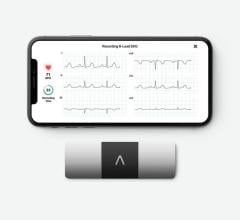August 11, 2009 – New research reveals T-wave morphology parameters contain predictive value for mortality in the general population, independent of other clinical risk factors, according to a study published in the August issue of the HeartRhythm Journal, the official journal of the Heart Rhythm Society.
The study indicates T-wave morphology parameters may allow healthcare professionals to better assess arrhythmia vulnerability in patients, and the prognostic value is uniquely related to cardiovascular mortality and seems to be gender specific. The study, led by Kimmo Porthan, M.D., department of cardiology at Helsinki University Central Hospital in Finland, aims to equip health professionals with a dependable prognosis tool that has never been available through traditional electrocardiographic QT intervals. The study was the largest of its kind and conducted by assessing 5,917 adults participating in the Finnish population-based Health 2000 Study.
“The study shows that, unlike ECG QT intervals, T-wave morphology parameters contain predictive value for mortality in the general population,” said Dr. Porthan. “The study results deepen our existing knowledge about the predictive value of several ECG repolarization parameters and will potentially help plan future clinical trials assessing cardiac repolarization.”
In this large, population-based prospective study, ECG T-wave morphology parameters, but not heart rate-corrected QT interval, provide independent prognostic information specifically on cardiovascular mortality. Of the 335 deaths that occurred between the start of the study and a mean follow-up of nearly six years, 131 were cardiovascular deaths. Additionally, T-wave morphology parameters show gender specificity in their performance, suggesting that T-wave morphology parameters should be assessed gender specifically in order for clinical risk indicators to be as precise as possible.
T-wave morphology parameters measure abnormalities during the ventricular repolarization phase and are potentially interrelated with arrhythmia vulnerability. As researchers learn more, T-wave morphology parameters may eventually help health professionals select specific treatment strategies.
For more information: www.heartrhythmjournal.com


 November 21, 2023
November 21, 2023 








